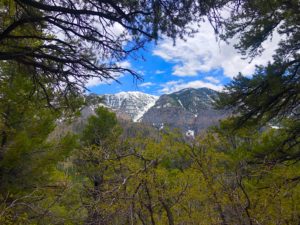The Riverside Hotel sits on the exact location where Reno began in 1859. C.W. Fuller operated a log building here that provided food and shelter to gold-seekers who were passing through the area in the reverse gold rush called the “Rush to Washoe,” spurred by the gold, and later silver, strikes of the famous Comstock Lode. Myron Lake owned the property from 1861 into the 1880s, running consecutive hotel businesses under the name Lake’s House. After Lake’s death, his daughter and son-in-law operated the hotel and renamed it the Riverside. A subsequent owner, Harry Gosse, converted the small frame building into a lavish brick hotel, retaining the name Riverside. This version of the Riverside Hotel was destroyed in a fire. Gosse intended to rebuild but was unable to finance the project and George Wingfield, Reno’s most powerful man at the time, acquired the property.
Nevada’s pre-eminent architect and former mining engineer Frederic DeLongchamps designed the 1927 version of the Riverside Hotel for George Wingfield. At six stories high, the Riverside was Reno’s tallest building at the time of its construction. For the building’s design, DeLongchamps employed the rich red brick, so common in Reno, with contrasting cream-colored Gothic Revival style terra cotta detailing. Situated as it is along the picturesque Truckee River, next to the Washoe County Courthouse, also designed by DeLongchamps, it is easy to see why the Riverside was Reno’s most elegant and popular hotel. Following the passage of the liberal 1931 divorce law, George Wingfield installed an enormous roof sign advertising the hotel in glowing neon that was visible all over the Truckee Meadows. The Riverside had an international reputation and was mentioned in nearly all of the novels and films featuring Reno divorces.
The Riverside Hotel was laid out to suit wealthy divorce-seekers, with 40 corner suites that included kitchen facilities and connecting rooms for children and servants. Each of the apartment suites was furnished with a specially designed cork-insulated and tile-lined refrigerator. Cold brine was circulated through the refrigerators from the main refrigeration plant in the basement. There were 60 single rooms for shorter stays as well. Such a room was occupied by Clare Boothe (award-winning author, editor of Vanity Fair, congresswoman and ambassador) when she arrived in Reno in 1929 to divorce her husband George Brokaw: “Her train arrived in Reno at 4:30 a.m. on Wednesday, February 6, 1929, in a fierce blizzard. Clare’s mood turned bleak as the weather when she discovered that her reserved apartment at the Riverside Hotel (a red brick building between the Truckee River and the courthouse) was occupied and that she would have to settle for a ‘cubby hole’ of a room for the first three days.”1
The Riverside Hotel was the spot most watched by news correspondents who had been sent to cover the national phenomenon journalist Walter Winchell dubbed Renovation. Reno had nearly as many reporters on hand as divorce-seekers, with news bureaus representing Associated Press, United Press, International News Service, the Sacramento Bee and the New York Daily News, all looking for an exclusive story. The Riverside Hotel has been rehabilitated and converted into living/studio spaces for artists, with funding assistance through the Nevada State Historic Preservation Office and the Federal Historic Preservation Tax Incentive Program.
The main lobby is open to the public.
Pictures below are provided by contributors or supporters of this website. If you are interested in sharing your pictures of Nevada, please drop us a note.

Courtesy S. Ward – Mount Charleston, near Las Vegas